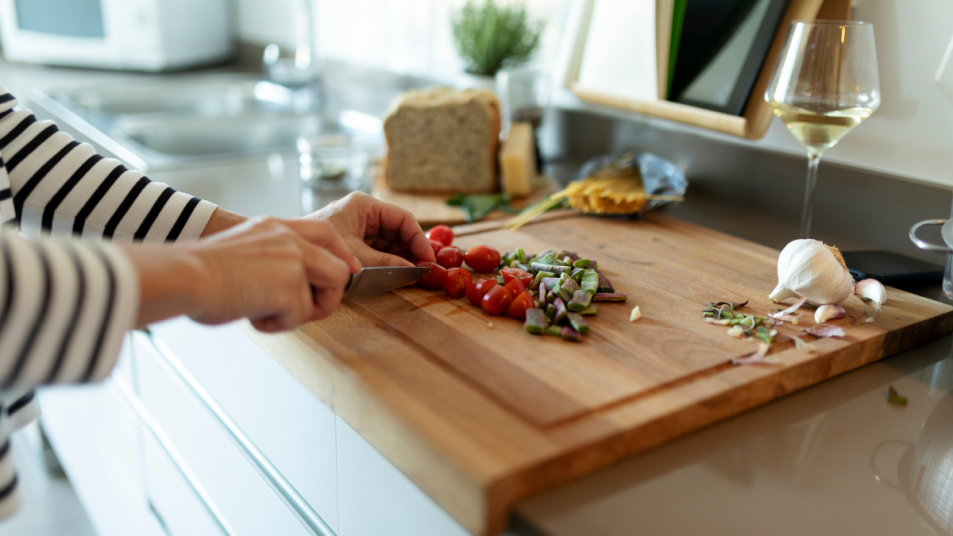Wood or Plastic Cutting Board? Here’s the Definitive Answer to Which You Should Use

When it comes to your kitchen cutting boards, you may not have given much thought to whether to make a wood or plastic one your go-to choice. After all, does it really matter? It turns out that science says one type of cutting board is superior to the other: wood.
While plastic may seem like the better choice because it appears easier to clean, these cutting boards are a dangerous breeding ground for bacteria. This is due to the fact that every slice you make with your knife leaves a tiny indentation for microscopic particles to slip through and thrive. Research from the University of Wisconsin found that wood cutting boards are better at not transmitting salmonella, E. coli, and listeria, all of which are common contaminants that lead to food poisoning. And even if you feel like you’ve adequately cleaned and disinfected a plastic cutting board after every single use, it’s impossible to fully wash the deep depressions left by those markings no matter how hard you try.
That said, don’t swear off plastic cutting boards just yet! There’s one instance where they’re better for slicing food. Plastic boards are great for cutting uncooked meats, since their juices might get absorbed in the layers of a wood board and become impossible to get out even after a dishwasher cycle or two. That ongoing contamination can lead to food poisoning or other potential health problems down the line. In contrast, pretty much everything else — fruits, veggies, cheeses, cooked meat, and breads — is safer when chopped on wood.
So the next time you’re figuring out which cutting board you’re going with, it’s a pretty safe bet to pick up a wood one. You don’t want to deal with the repercussions later on!
















